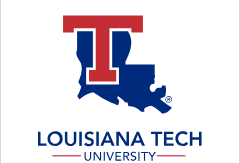Date of Award
Spring 5-24-2025
Document Type
Thesis
Degree Name
Master of Science (MS)
Department
Molecular Science and Nanotechnology
First Advisor
Gergana Nestorova
Abstract
Human dermal fibroblasts are essential for maintaining skin homeostasis. However, exposure to exogenous and endogenous stressors can lead to fibroblast instability, extracellular matrix degradation, and excessive reactive oxygen species (ROS) production. These factors contribute to skin aging and ROS-induced skin disorders leading to hair loss. Adverse effects from synthetic treatments have driven interest in natural alternatives like plant extracts for skin therapy. However, the polyphenols in these treatments require an effective delivery system to ensure their stability and targeted application. Plant derived nanovesicles (PDNVs) are emerging as a promising natural alternative for therapeutic applications. Their biocompatibility, stability, and encapsulated compounds make them attractive nanocarriers for polyphenols known for their antioxidant potential. Despite their potential, PDNV isolation techniques have yet to be standardized, with limited focus on their extraction from phenol-rich aromatic herbs. This study utilized syringe-vacuum infiltration to extract apoplastic wash fluid from Rosmarinus officinalis leaves, followed by the isolation of rosemary leaf-derived nanovesicles (RNVs) for ROS modulation. This method resulted in a reproducible vesicle yield, with confirmed phenolic content and antioxidant potential in comparison with R. officinalis liquid extract. While the liquid extract harbored more polyphenols and greater antioxidant capacity, in vitro incubation of RNVs with dermal fibroblasts reduced baseline ROS levels and maintained cell viability. These findings support RNVs as an effective polyphenol delivery system for cosmetic applications. This research also expands the understanding of herbal PDNVs, providing insight into their isolation and therapeutic potential. Future studies should explore dose dependent effects to further establish their efficacy in biomedical applications.
Recommended Citation
Griffin, Shani Akila, "" (2025). Thesis. 145.
https://digitalcommons.latech.edu/theses/145
Included in
Biology Commons, Cellular and Molecular Physiology Commons, Nanoscience and Nanotechnology Commons

